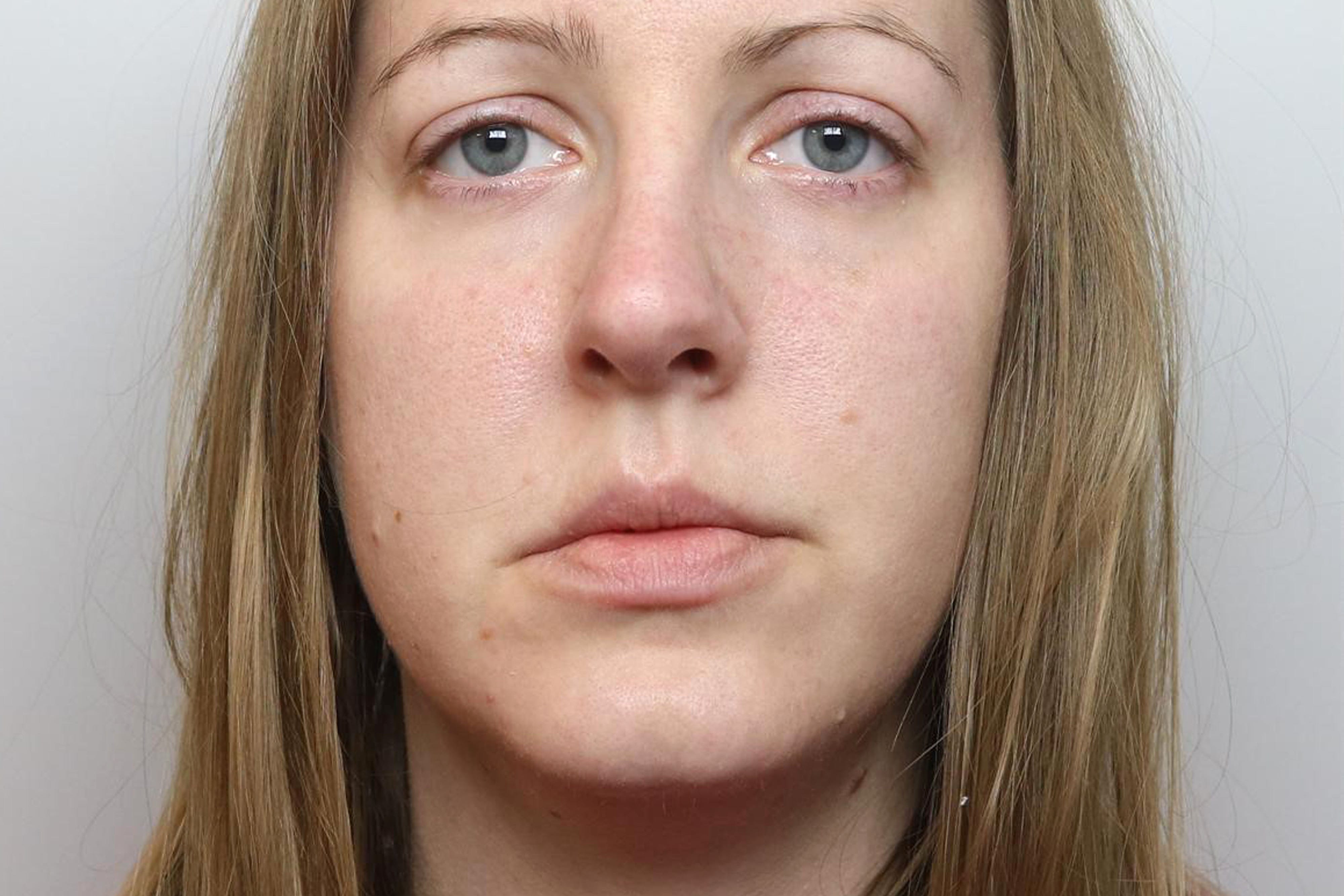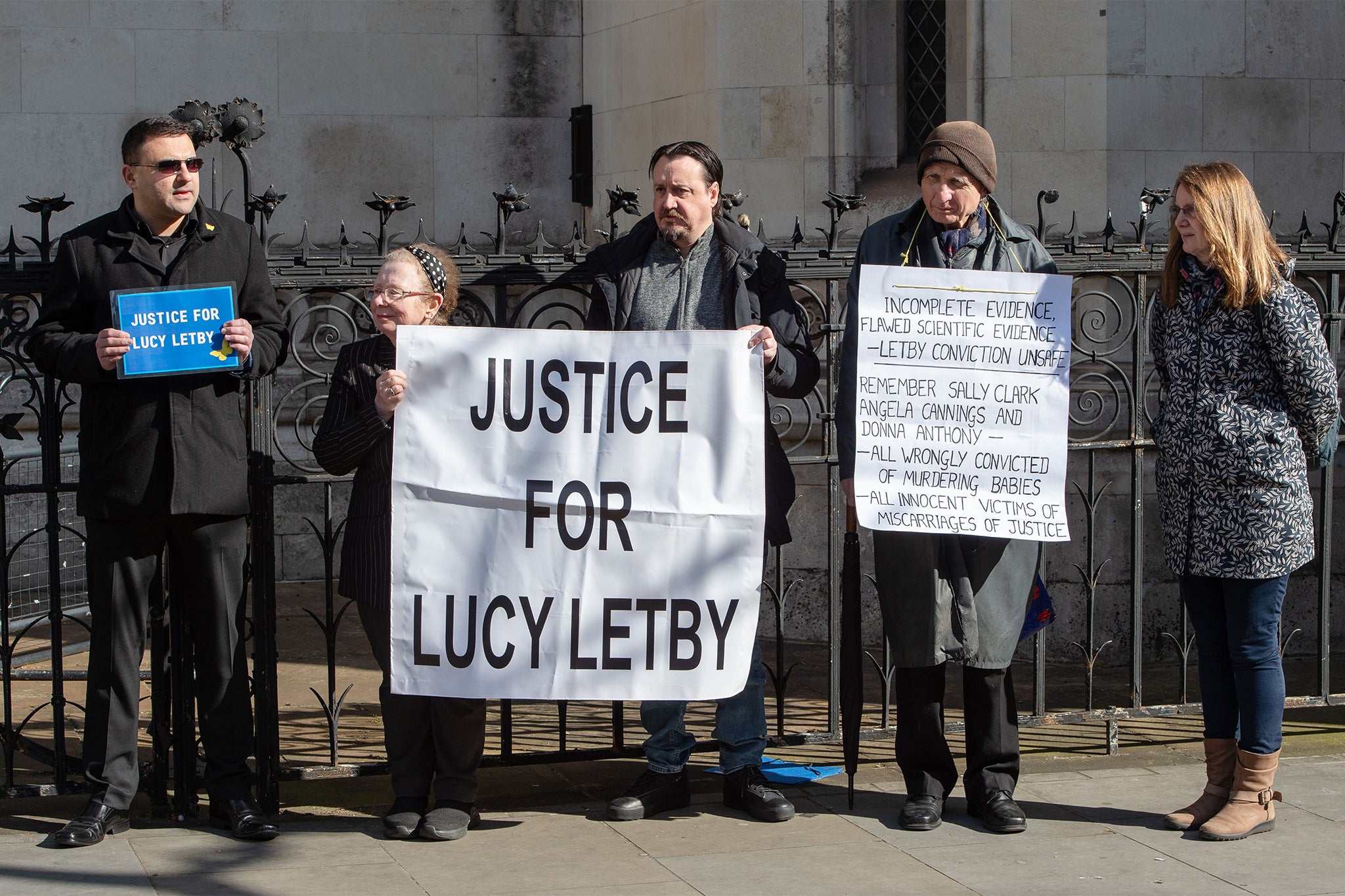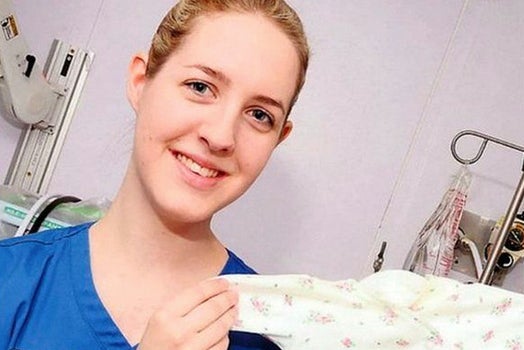This is why I think Lucy Letby is guilty – and you should too
Lucy Letby’s new legal team prepares to launch a fresh appeal over the killer’s convictions, but is there really a new case to answer? No, says Nigel Bunyan, who has spent countless hours examining the evidence and putting together a timeline of what happened


There’s a new circus in town and its butterfly-themed banners are emblazoned with the name of a nurse called Lucy Letby. Increasingly, vocal supporters would have us believe that the 34-year-old has been wrongly convicted of murdering seven babies and attempting to kill seven more for which she has received 15 whole-life prison sentences.
Pitching her as a loving nurse whose life of selfless dedication has been wilfully destroyed because of a problematic neonatal unit in need of a scapegoat for the babies that died on their watch, she emerges as a perfect heroine, you might think, for the next Netflix blockbuster.
Except that in the real world, the evidence tells us there has been no miscarriage of justice. Letby was convicted by not just one, but two, juries at two separate trials. Having spent nights and early mornings compiling a 17,000-word timeline of that lethal year at the Countess of Chester Hospital, like them, I have no doubt of the culpability of this nurse.
And according to the time-honoured workings of the UK legal system, she actually is the real deal – a convicted serial killer who murdered the most vulnerable infants in her “care”, causing untold devastation to their parents and all who loved them.
Barring a confession as to why she committed such an evil act, it’s unlikely we’ll ever get to know. Indeed the puzzlement which surrounds this absence of a motive – beyond the notion of a disturbed mind – has created a vacuum that is being filled by amateur sleuths convinced of her innocence.
While they create hot wind and hysteria, however, the rest of us would do well to cast our minds back to the scrawlings on Post-it notes, which were found after a police search on her home. “I am evil I did this”, she’d written. “I killed them on purpose because I’m not good enough to care for them [and] I am a horrible evil person.”
It was the closest to a confession the jury would get from the nurse who was convicted, in part, by the words tucked away on a scrap of paper in one of her diaries.
Of course, her supporters will direct you to some of the lines that could be interpreted as indicators of innocence: “I haven’t done anything wrong,” for example. And “Why me?” but these weren’t the ones that resonated most deeply with the original jury who had all the other evidence before them.
Throughout the trial, the one-time Ellie Goulding fan steadfastly maintained her innocence. Even as security guards led her out of court, she cried out “I’m innocent.” It was an echo of her mother’s own anguished cries when the first guilty verdicts were returned last August. “You can’t be serious,” Susan Letby shouted out in court. “This cannot be right.”
The “Letby Is Innocent” bandwagon started to really gather momentum with a 13,000-word article published in The New Yorker earlier this year. The timing of this piece, which questioned the logic and competence of the statistical evidence in her trial, was mischievous given that the retrial over one of the babies, Baby K, was about to begin.
As a result, the article was referred to the attorney general for investigation as a possible contempt of court. While online versions were banned from UK websites, a British audience quickly found a way to read it while proceedings for her second trial were active.
David Davis, the Conservative MP, seized on the issue, suggesting the court order was “in defiance of open justice” and demanded a review. The then justice secretary, Alex Chalk, had to remind him – as if he didn’t know – of the need to protect the neutrality of an imminent trial.
The spark of social media interest was already smouldering by the time the retrial got underway. A small but passionate cohort of Letby supporters turned up at Crown Square in Manchester, queuing for places either in Court 7 or the overspill seats in Court 16. Many wore yellow butterfly badges similar to one their heroine had once worn on her scrubs.

Last weekend, the ante went up a notch when the Crown Prosecution Service confirmed there were errors in some of the time-swipe data presented in the original trial. This threw into question some of the precise timing of another nurse’s return to the neonatal unit and the possibility that Letby hadn’t actually been the sole nurse on the unit at a key point in the evidence.
But we’re talking of events eight years ago, and for half the trial there was actually zero door swipe data because the hospital had somehow failed to save it. There was also no CCTV to monitor because none had ever been installed. Ultimately, whether Letby was the sole nurse or not, the key evidence lies in the recollections of Baby K’s designated nurse, Joanne Williams, and the lead paediatrician, Ravi Jayaram – what they saw, heard and sensed in real time.
Jayaram, who already held suspicions about Letby and was therefore on high alert, recalls walking in and seeing the killer standing beside the infant’s incubator but doing nothing to intervene as her oxygen levels dropped to critical levels.
They could see how she had moved so deftly in the shadows, so often protected by the trust of colleagues who made the fatal assumption that she cared as much for the babies on the unit as they did
Letby’s very capable barrister, Ben Myers KC, questioned whether Jayaram’s account was “truthful” and alleged he had exaggerated the situation in the court proceedings simply to make things worse for his client and thus make the charges stick.
Jayaram, however, said that he was certain of what he felt and that it was a matter of “infinite regret” that he had not called 999. “I only wish I had the courage to do that,” he said, adding that he had been in “unchartered territory” feeling an “element of denial” that a carer in their midst could be a serial killer.
To many observers, however, the entire prosecution case felt like a lacklustre affair. For much of the time I sat watching the trial, it felt as though Nick Johnson KC, the crown’s lead barrister, wanted to keep the tone as “beige” as the woman in the glass-panelled dock behind him.
Emotion was kept to a minimum. Very few of the babies’ parents gave live evidence, their accounts were generally reduced to written statements read out in rushed monotone by a junior barrister. Many of the medical witnesses appeared behind screens, and the married registrar Letby was said to be in love with was among those granted anonymity which felt unusual in the context of a major trial.
There were other times, too, when the prosecution seemingly became its own worst enemy, most notably when it refused point blank to publicly release a key X-ray image that showed a white line of air tracking a dead baby’s spine which would show how air was deliberately forced into their tiny bodies.

While the jury was given sight of an X-ray, the public were denied that opportunity. At the time the CPS said it was because the image formed part of the baby’s private medical records. The fact that it was a key element in a landmark murder trial didn’t seem to register in their thinking. Perhaps some of Letby’s supporters would change their minds if the CPS released it retrospectively. However, they have said this isn’t something they will do.
The X-ray also underpinned the evidence of the prosecution’s main expert witness, retired paediatrician Dewi Evans, who under an intense cross-examination repeated time and time again his belief that infants had been deliberately injected with air.
His evidence was questioned by Myers’s closing speech to the jury and in an appeal against her original convictions by Letby’s defence team who argued his evidence should be disregarded. Her lawyers claimed he had “constructed theories designed to support allegations … rather than forming and presenting an independent opinion on the facts”.
However, this appeal was rejected and Evans found it to be “thoughtful, fair and correct”. His evidence was found to be sound.
The original jury was bombarded with reams of files, medical notes, and yes, a welter of door swipe data. One of the most emotional moments came when a female paediatrician told how she effectively begged the transport team from a higher-level hospital to take away the one surviving infant from a set of triplets.
It is to the parents of her victims, all of them still trying to grieve for their lost babies, that our minds must turn
His brothers, both viable for all their diminutive size, had already died by Letby’s hand and the colleague sensed that this baby, too, would be in “mortal danger” from the nurse if he remained in Chester. His transfer was authorised and, today, he is a thriving eight-year-old.
Myers had every opportunity to call some of the medical experts now being quoted in The New Yorker and elsewhere. He chose not to. Indeed, the only witness he did call, aside from Letby, was a plumber by the name of Lorenzo Mansutti. His knowledge extended no further than drainage problems unconnected to the charges, so for many observers, it remains a mystery as to why he was asked to give evidence at all.
For all the paucity of Letby’s defence, there was some sympathy for Myers’s view that his client was often being damned if she’d been on the unit at certain times and damned if she hadn’t.
Having heard the evidence over a period of 10 months, the jury was effectively asked to decide whether Letby had been an innocent passer-by in a series of unprecedented deaths and near deaths, or a deadly killer eventually caught out by a “constellation of coincidences” that had no other plausible explanation.
And at the end of that process, which took weeks of diligent deliberation to complete, they returned the largely guilty verdicts that will keep Letby behind bars until her dying breath.

Suddenly, for all the woolliness of the case as it unfolded, they could see how she had moved so deftly in the shadows, so often protected by the trust of colleagues who made the fatal assumption that she cared as much for the babies on the unit as they did.
Many of these people counted her as a friend, and when she broke down in apparent distress over those dying on her watch, they instinctively reached out in support. Their sense of betrayal must now be complete.
But it is to the parents of her victims, all of them still trying to grieve for their lost babies, that our minds must turn. Throughout the legal process, they have had to confront the horrific reality that Letby, the nurse who seemed anxious to comfort them in their darkest moments, and who even sent some of them sympathy cards, was in reality the cause of their pain.
Now they have the challenge of coping with unsubstantiated noise about the safety of her convictions and the blind faith of some who, unlike the jury, didn't spend months sitting in court considering the evidence, that she is innocent.
Today, these parents who have experienced the deepest loss are resolute in their condemnation of Letby, and content that she is behind bars and will remain there.

The pro-Letby campaign has been described by Peter Skelton KC, who represents some of the families of her victims as “grossly offensive and distressing”. One mum, whose baby the former nurse tried to kill, told The Times: “You don’t want to see her face, you don’t want to hear her name, you don’t want to hear people shouting that she’s innocent. She’s not innocent, she was found guilty in a court of law.”
Meanwhile, Cheshire Police are continuing the second phase of Operation Hummingbird, sifting through further material that may amount to a catalogue of further historic attacks by the woman now ranked as the most prolific baby killer of modern times.
Next month, Lady Justice Thirlwall will begin her inquiry into Letby’s killings and the failings in hospital systems she was able to exploit. Would all that really be happening if there was any genuine concern over her conviction?
Letby’s barrister is engaging with no one – neither the media nor the conspiracy theorists. But still, the fevered circus rumbles on with little thought to the new pain being caused to the parents who had hoped the nightmare they had endured was finally coming to an end.
The Sands national helpline provides support for anyone affected by the death of a baby. You can call 0808 164 3332 free of charge, or email helpline@sands.org.uk
Subscribe to Independent Premium to bookmark this article
Want to bookmark your favourite articles and stories to read or reference later? Start your Independent Premium subscription today.


